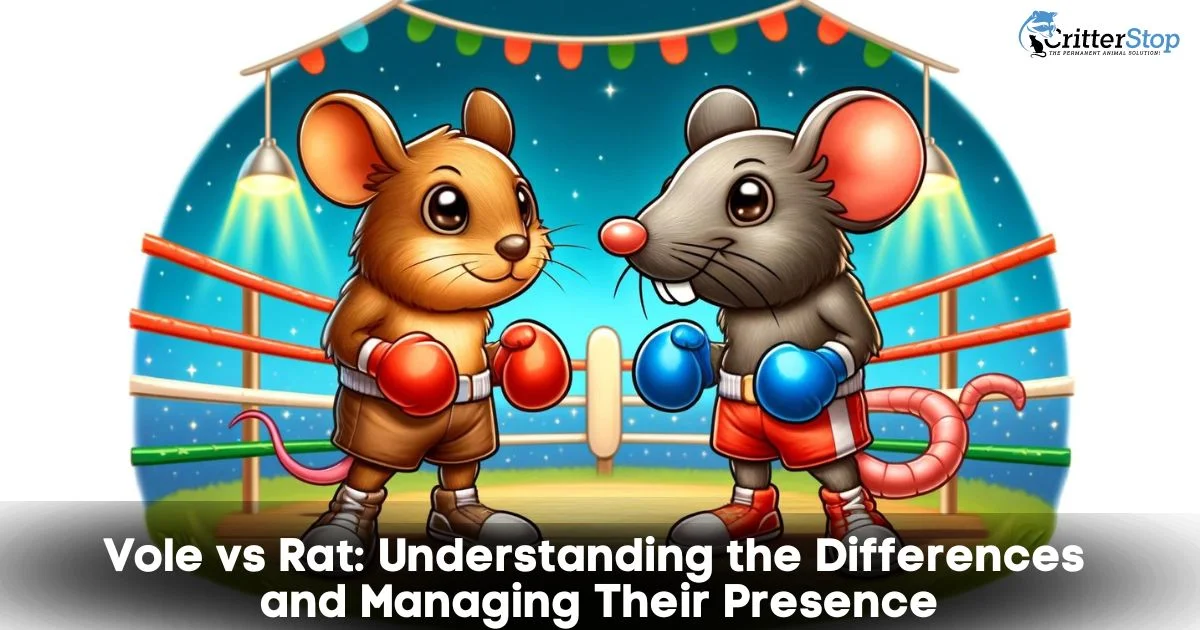
In the nuanced world of rodent identification and control, distinguishing between a vole vs rat is crucial for effective management strategies. This comprehensive guide delves into the distinct characteristics of voles and rats, exploring their habits, environmental impact, and the best practices for controlling their populations. Whether you are dealing with an infestation or just curious about these small creatures, understanding the differences between voles and rats is the first step in effective pest management.
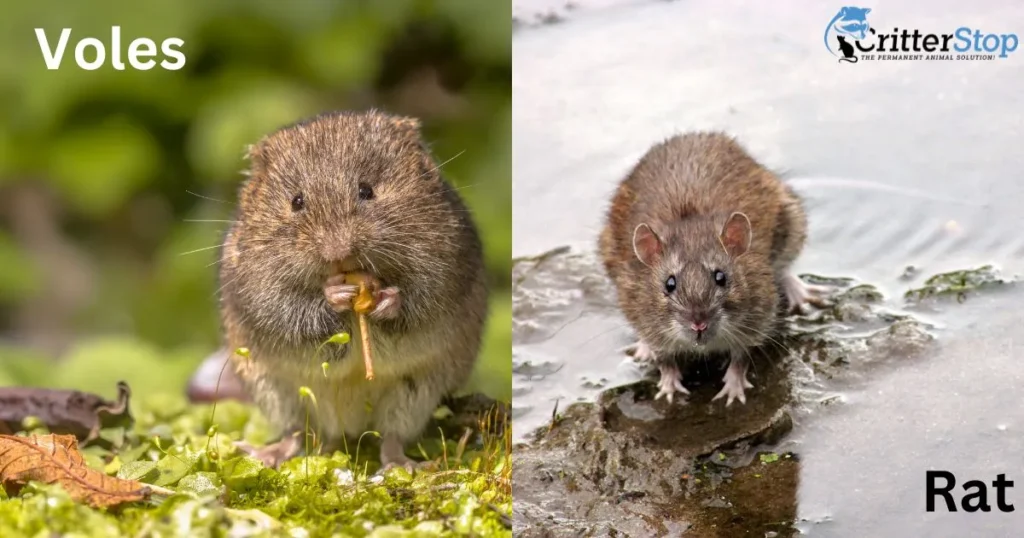
Voles, commonly referred to as field mice, exhibit a stouter body with a shorter tail, smaller eyes, and a less prominent, rounded snout compared to rats. They are typically covered in dense, brown or grey fur. On the other hand, rats, such as the common Norway rat, are larger and have a more elongated body, a scaly tail that is longer than their head and body combined, larger ears, and a pointed snout which makes them appear more aggressive in demeanor.
Voles are primarily ground-dwelling creatures that prefer grassy fields and gardens where they can easily access their food sources. They create well-defined, visible tunnels and paths in grassy areas. Rats, particularly urban dwellers like the Norway rat, adapt well to various environments but prefer moist areas close to structures. In urban settings, rats are notorious for their ability to thrive in sewers, basements, and any areas where human refuse is present.
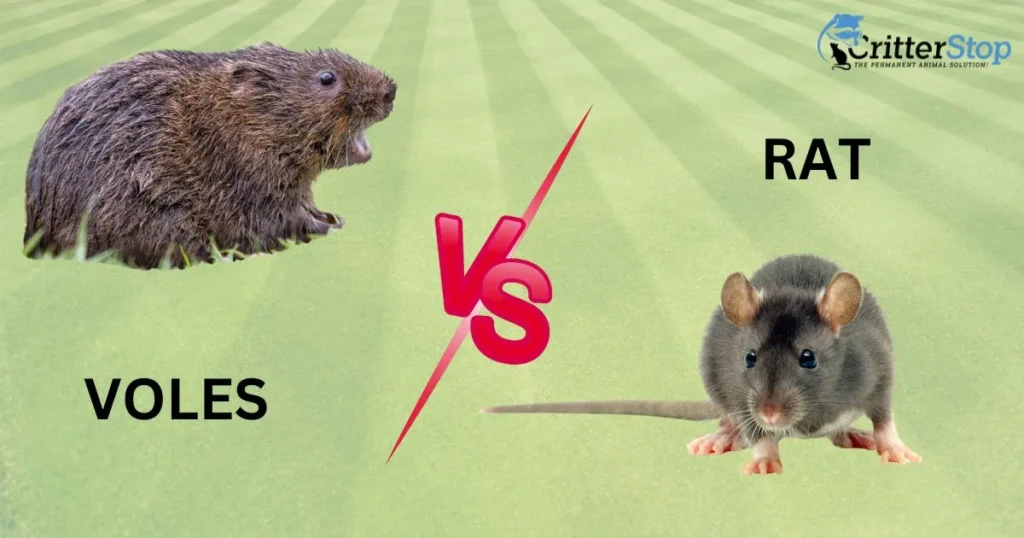
The diet of a vole is predominantly grasses and the roots of young plants, which explains why they are often considered pests in agricultural and garden settings. Rats are more opportunistic feeders, with a diet that can range from fruits and seeds to invertebrates and even trash in urban areas, making them more versatile in their feeding habits.
Voles have a remarkable reproductive rate; they can produce several litters a year, each containing a substantial number of offspring. This rapid reproduction rate can quickly lead to large populations. Rats also reproduce quickly but tend to have fewer offspring per litter compared to voles.
Voles primarily impact vegetation and are considered pests in gardens and farms due to their ability to destroy crops and landscape features. Rats, due to their diverse diet and habitat preference, pose a broader range of issues, including structural damage and the transmission of diseases to humans, thus representing a significant public health risk.
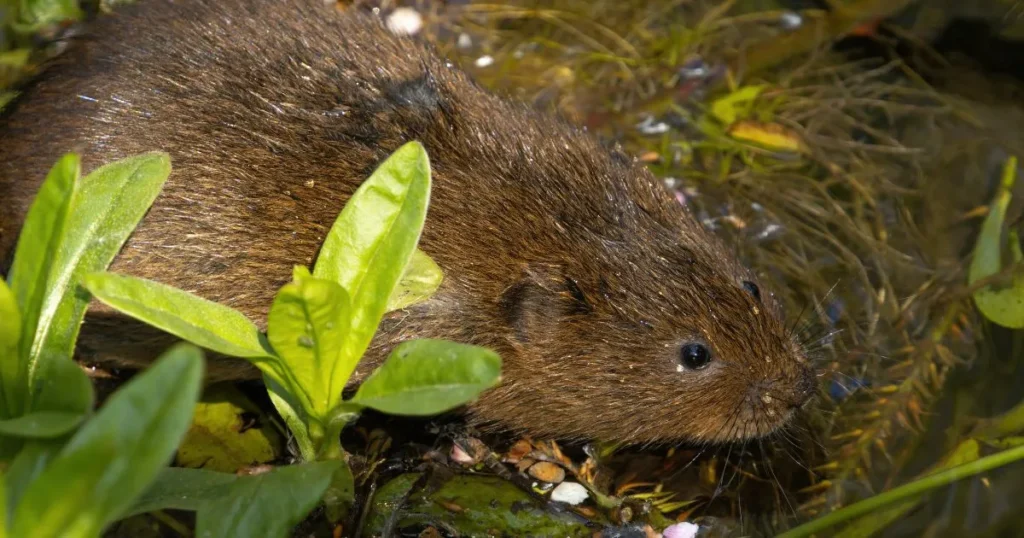
Preventing and controlling voles and rats requires tailored strategies that consider the unique behaviors of each rodent. For voles, habitat modification, such as reducing ground cover and frequent mowing, can discourage their presence. Repellents and trapping are also effective for smaller populations. For rats, securing food sources, proper sanitation practices, and rat-proofing buildings are critical measures. In both cases, professional pest control services might be necessary when dealing with a significant infestation.
IPM involves multiple strategies to manage pest populations effectively while minimizing harm to the environment, humans, and non-target species. This includes biological control, using predators like cats or owls for rats, or employing habitat management strategies to reduce vole populations. Chemical controls, such as rodenticides, are used as a last resort due to their potential impact on the environment and non-target species.
It is essential to consider local wildlife regulations when implementing control measures, especially for chemical and lethal methods. Environmental concerns also play a crucial role, as improper use of rodenticides can lead to secondary poisoning of non-target wildlife and pets.
Effective management of voles and rats starts with vigilant monitoring and early detection. Regularly inspecting property for signs of infestation can prevent the widespread damage these rodents are capable of. For voles, look for freshly chewed plant bases or burrows in the soil, especially in garden areas. Rat infestations can be identified by droppings, gnaw marks, and greasy rub marks along walls or baseboards.
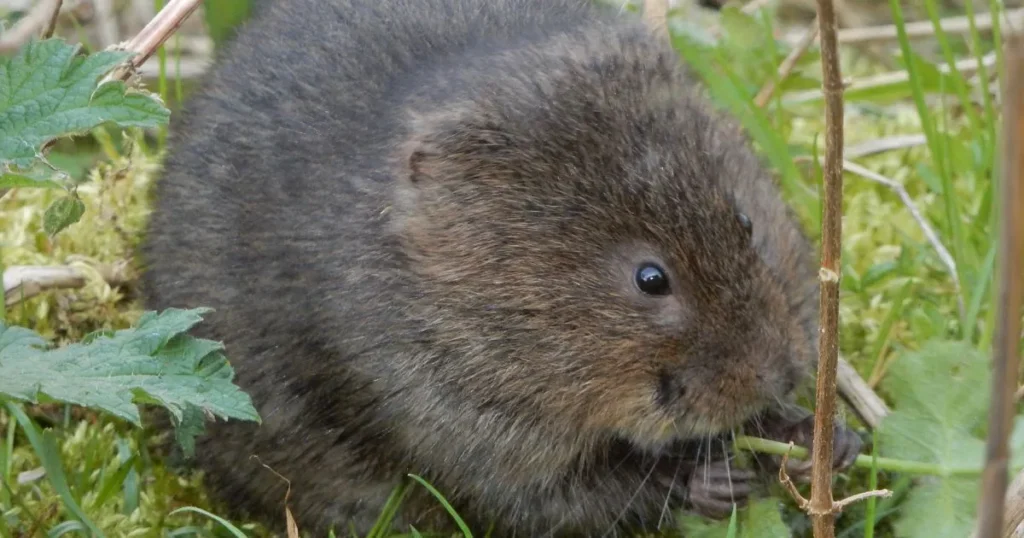
Advancements in technology have introduced new methods for controlling voles and rats that are more humane and environmentally friendly. Ultrasonic devices, which emit high-frequency sounds that are distressing to rodents but inaudible to humans, offer a non-toxic alternative to traditional rodenticides. Additionally, smart traps that provide real-time monitoring and notifications about trap activity are becoming more prevalent, enhancing the efficiency of rodent management programs.
To ensure long-term control of vole and rat populations, it is crucial to implement sustainable strategies that focus on ecological balance and humane practices. This includes fostering natural predators in the area, such as birds of prey, which naturally manage rodent populations. Planting vegetation that repels these rodents can also be an effective deterrent, reducing the need for chemical interventions.

While many effective DIY methods can be employed for small-scale infestations, collaborating with professional pest control services is advisable for larger or more persistent problems. These experts can provide customized solutions that are tailored to the specific needs and challenges of your property. Moreover, they can ensure that all interventions are conducted safely, effectively, and in compliance with local environmental regulations.
The challenge of distinguishing and managing voles and rats in both urban and rural settings requires a comprehensive understanding and a multifaceted approach. By combining early detection, community education, technological advancements, and professional expertise, individuals and communities can achieve sustainable outcomes in pest management. Effective control of these rodents not only protects properties and crops but also preserves the health and safety of the environments we live in.
If you discover signs of vole or rat on your property, it is essential to address the issue promptly to prevent health risks and property damage. Critter Stop specializes in humane and effective rodent control solutions tailored to your specific needs. Our experienced team uses the latest technology and methods to ensure a safe and swift resolution to your pest problems. By choosing Critter Stop, you're not only safeguarding your home or business but also ensuring that the methods used are environmentally friendly and ethical. Don't let rodents disrupt your peace of mind. Contact us at (214) 234-2616 today for professional assistance and regain control of your property.
Visit our Critter Library and learn more about our furry friends